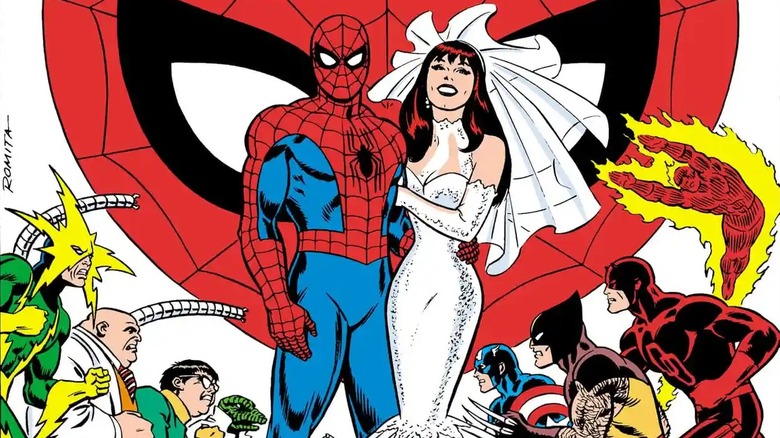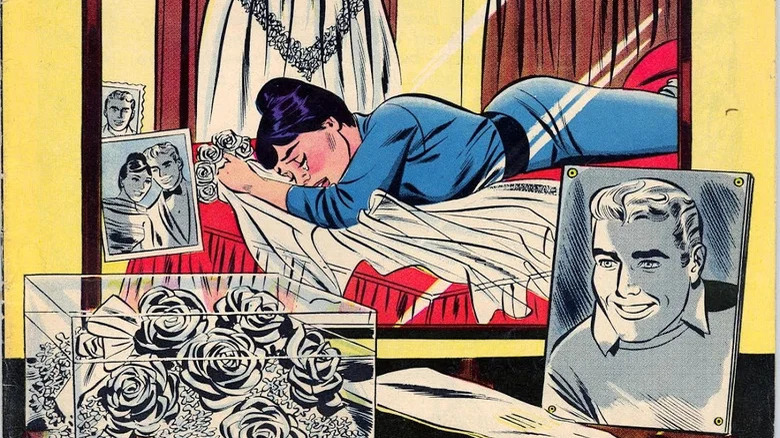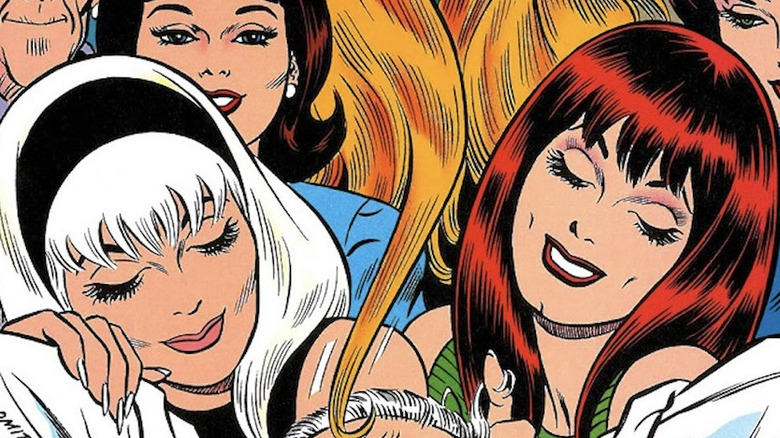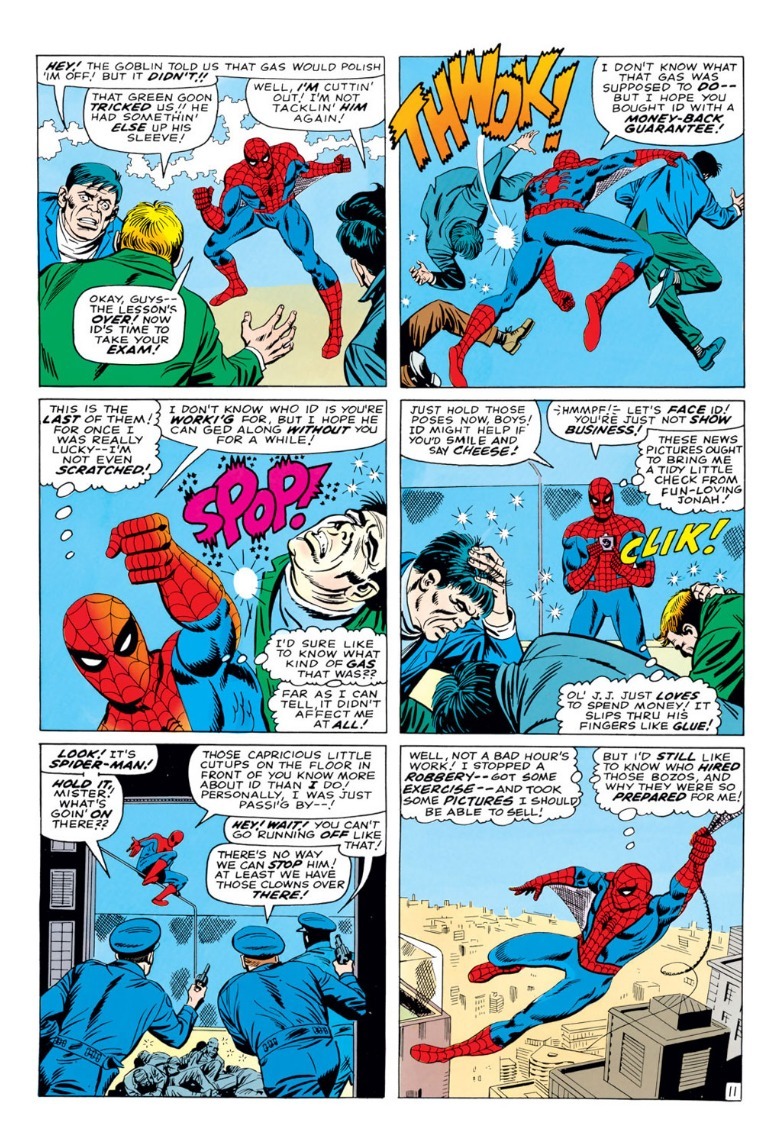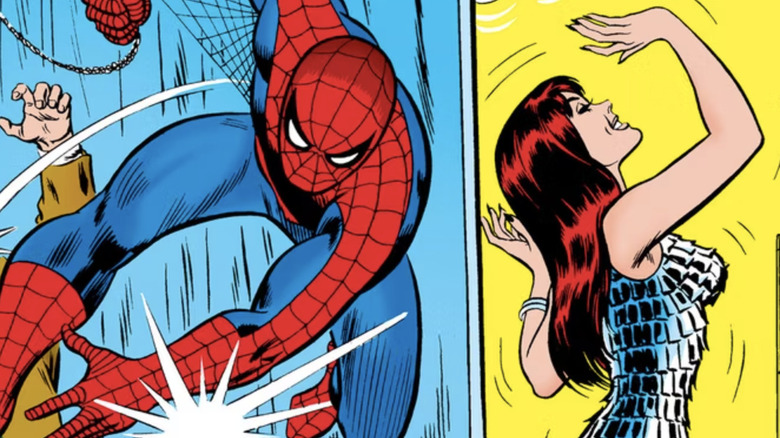How Marvel's John Romita Sr. Turned Spider-Man Into A Romantic Hero
A legend is no longer with us, for comic artist John Romita Sr. passed away on June 12, 2023, as confirmed by his son, John Romita Jr. (a prolific comic artist in his own right). Romita Sr. worked at both of the "Big Two" American comic companies over his long career, but his impact was most felt at Marvel, particularly with Spider-Man.
Romita was the second artist to draw "The Amazing Spider-Man" after original co-creator Steve Ditko left. Romita had previously been drawing "Daredevil" which, at the time, was basically low-rent "Spider-Man." Romita stayed on for about 50 issues and left just as lasting a legacy on Spider-Man as his predecessor did. Romita's debut issue, #39, was an important one: it's when the Green Goblin's true identity is finally revealed. Romita's cover, which depicted the Goblin on his glider dragging a tied-up, unmasked Spider-Man behind him, has been homaged plenty since.
However, I'd contend Romita's most important "Spider-Man" issue was #42. Why? That was the first appearance of Mary-Jane Watson; the issue famously ends with Peter Parker opening the door to greet her and being left dumbstruck by the redhead bombshell in front of him, who declares: "Face it, Tiger, you just hit the jackpot!"
MJ had been built up since "Amazing Spider-Man" #15 but was kept off-panel until #42. In issue #25, Liz Allan and Betty Brant's jaws drop at her beauty. While Ditko had first hinted at MJ's appearance, I'd argue only Romita could've crafted as stunning a first impression. MJ's debut, not just her first appearance but her addition to the book's supporting cast, also speaks to how Romita gave "The Amazing Spider-Man" a different style than Ditko; he brought romance to Peter Parker's life.
Infusing some romance
Romita worked at DC Comics from 1958 to 1965, but he wasn't drawing Superman or Batman at that time. No, he was drawing romance comics; his covers didn't depict heroes and villains clashing, but the tender embraces of lovers and young women gazing forlornly at the objects of their desire. To draw romance comics, Romita's characters had to be good-looking — and he passed that test with flying colors. Romance comics' time in the sun ended during the 1960s (the stringent censorship of the Comics Code Authority didn't help) and when Romita joined Marvel, he got to draw cape comics instead.
The artist was interviewed for the BBC documentary "In Search of Steve Ditko," where he discussed how his romantic style shaped Spider-Man. "When I take over a book, all my heroes are handsome, I can't help it," Romita recounted. Under Romita's pencil, Peter ditched his glasses, got a "toothpaste smile," and went from pencil-thin to muscular (especially noticeable when he was in costume as Spider-Man). Gwen Stacy's features as drawn by Ditko — thin face, sharp eyebrows, harsh glare — softened. As for MJ, Romita based her on Ann Margret, who at that time was every American boy's dream girl. More generally, the scraggly lines that Ditko had penciled on characters' faces vanished and everyone grew a square jaw or cleft chin.
Romita, who had wanted to hew closer to Ditko's art, was worried his style would "kill" the book — apparently, Stan Lee shared that concern. Instead, sales on "The Amazing Spider-Man" were even better under Romita's pen than under Ditko's.
Romita compared to Ditko
Romita had a stronger populist instinct than Ditko ever did, and that's reflected in their art styles. On top of his more attractive characters, Romita had a flare for bigger action. Read Ditko's issues of "Amazing Spider-Man" and you'll notice he tends to use a nine-panel grid for his page layout. This results in boxy, often crowded panels. His action is decompressed, with small boxes emphasizing each punch thrown by Spider-Man or the villain of the issue.
When Ditko goes big, it's purposeful. In "Amazing Spider-Man" #33 — "If This Be My Destiny...!" — Spider-Man is trapped under a machine after fighting Doc Ock. The opening pages are a single sequence about Spider-Man freeing himself, growing in size as his strength slowly returns. Page 2 is a nine-panel layout, page 3 is a six-panel, page 4 is a four-panel, then page 5 (when Spidey frees himself) is a single-page spread.
Romita preferred to go bigger more often. Let's look at his "Amazing Spider-Man" debut, issue #39: Romita prefers a six-panel layout, only using nine like Ditko a couple of times during dialogue-heavy pages. As Romita stayed on the title longer, he started going even bigger and using four-panel layouts. Bigger panels meant more money shots; there might be greater continuity jumps between each panel but the images were all the more exciting.
If you want a direct comparison between their styles, examine how they draw Spider-Man's origin in "Amazing Fantasy" #15 and "Amazing Spider-Man" #50, respectively; some of the panels have identical compositions, but quite a different rendering.
Art shapes storytelling
Marvel Comics abided by the "Marvel Method" of production. The editor (Stan Lee) would devise a story, the artist would draw the issue, then Lee would fill in the dialogue. This is one reason why creator credits for Marvel's characters remain controversial; the artists had a lot of direct control over the storytelling.
Romita's new sexy Spider-Man meant a shift in the book's tone. Peter went from being a loner to having a consistent friend group; he moved in with Harry Osborn while even high school bully Flash Thompson became more of a friendly nuisance. Dikto's Peter always lost out on love and ended many an issue moping. Romita's Peter finally got a girlfriend in Gwen (after a brief love triangle involving them and MJ). While Ditko often drew Peter as standing off to the sidelines, Romita always depicted him as part of the group.
Romita's influence on Spider-Man endures. His successor, Gil Kane, imitated his style over Ditko's. Jeph Loeb and Tim Sale's "Spider-Man: Blue," a retelling of Romita's first issues, captures their romantic spirit and Sale's character designs are like painterly covers of Romita's pencils. Sam Raimi's "Spider-Man" film trilogy is essentially about Ditko's outcast Peter (Tobey Maguire) stuck in Romita's melodrama; so much of the trilogy's heart is about Peter's romance with MJ (Kirsten Dunst).
This isn't to snub Ditko — he experienced enough of that in life and without him, Spider-Man wouldn't even exist. Romita acknowledged in the aforementioned documentary:
"I wouldn't have been able to pick up 'Spider-Man' and hit the ground running if it hadn't been established so beautifully [...] it was a working machine when I got it and all I had to do was put the oil in."
But while Peter Parker became an icon thanks to Ditko, he only became a heartthrob because of John Romita Sr. May he rest in peace.
